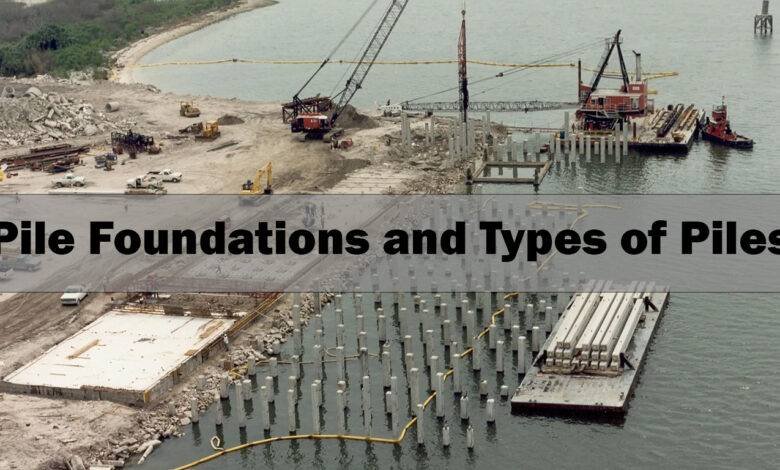Pile Foundations and Types of Piles

Pile Foundations: A Strong Base for Structural Stability
Pile foundations are an essential component of modern construction, providing a robust and stable base for various structures. They are used when the soil near the surface is unable to support the load of the structure, requiring deeper support elements. This article explores the types, advantages, disadvantages, installation process, testing methods, and maintenance of pile foundations.
Introduction to Pile Foundations
Pile foundations are deep structural elements that transfer a load of a structure to deeper, more competent layers of soil or rock. They consist of long, slender columns made of various materials such as concrete, steel, or timber. Pile foundations are commonly used in tall buildings, bridges, offshore structures, and other projects where soil conditions near the surface are weak or unstable.
Types of Piles
Driven Piles
Driven piles are installed by forcefully driving them into the ground using impact hammers. There are several types of driven piles, including:
Concrete Piles
Concrete piles are precast or cast-in-place cylindrical columns made of reinforced concrete. They are durable, resistant to corrosion, and suitable for various soil conditions.
Steel Piles
Steel piles are high-strength, hollow steel tubes or H-shaped sections. They are versatile, capable of bearing heavy loads, and can be easily extended if needed.
Timber Piles
Timber piles are wooden columns made from treated timber, such as pine or oak. They are cost-effective and suitable for temporary structures or projects with environmental considerations.
Bored Piles
Bored piles, also known as drilled piles, are created by excavating soil and then filling the hole with concrete. They are commonly used in cohesive soils and for large-diameter piles.
Driven and Cast-in-Place Piles
These piles combine the advantages of driven and bored piles. They are first driven into the ground to create a borehole and then filled with concrete to enhance their load-bearing capacity.









Very useful for Engineers.